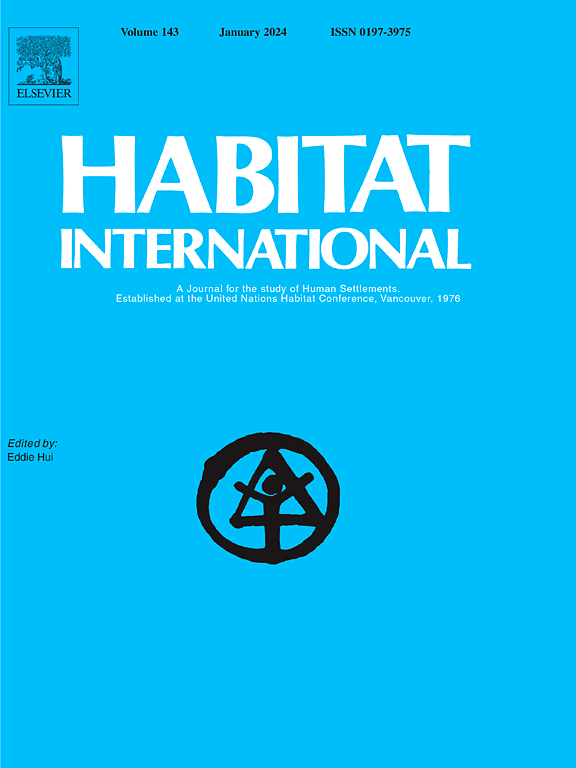区域尺度上紧凑性情景下城市扩张模拟的新模型
IF 6.5
1区 经济学
Q1 DEVELOPMENT STUDIES
引用次数: 0
摘要
城市扩张对快速城市化地区的可持续发展具有重要影响。城市快速扩张过程中人口密度和空间紧凑度的变化对可持续发展具有重要影响。然而,目前的区域尺度城市模拟模型很少考虑人口密度和空间紧凑性。本研究提出一种基于人工神经网络的区域未来人口密度预测方法。提出了一种考虑人口密度和城市空间紧凑性的城市扩展空间模拟模型(UECS模型)。该模型采用一种新颖的轮盘赌方法,将自上而下的紧凑性控制与自下而上的空间分配机制相结合。自上而下的控制,包括设定未来人口密度和平均邻近扩展指数(APEI),对空间紧凑性产生宏观层面的影响。自下而上的CA和细胞邻近扩张指数(CPEI)在微观层面上改变了城市扩张的空间紧凑性。以西非为研究区域的验证表明,UECS模型具有良好的仿真性能和较强的密实度控制性。最后,基于UECS模型,我们以300米分辨率在五种不同紧凑度情景下模拟了2020年至2060年西非的城市增长。结果表明,在不同的紧凑度情景下,西非未来的城市扩张将有显著差异。该模型为模拟不同水平的城市紧凑性提供了一个框架,使我们能够探索不同策略对城市发展和可持续性的影响,并为城市发展决策支持提供依据。本文章由计算机程序翻译,如有差异,请以英文原文为准。
A novel model for simulating urban expansion under compactness scenarios on a regional scale
Urban expansion has a significant impact on sustainable development in rapidly urbanizing areas. The changes in population density and spatial compactness during rapid urban expansion significantly impact sustainable development. However, current regional-scale urban simulation models are rarely incorporated into population density and spatial compactness. This study proposes an ANN-based method for predicting future population density in a region. A spatial simulation model for urban expansion that takes into account the population density and urban spatial compactness (UECS model) is proposed. The model integrates top-down compactness control with bottom-up spatial allocation mechanisms using a novel roulette approach. The top-down control, which involves setting the future population density and average proximity expansion index (APEI), exerts a macro-level influence on spatial compactness. In contrast, bottom-up CA and cell proximity expansion index (CPEI) change the spatial compactness in urban expansion at the micro level. The validation using Western Africa as the study area shows that the UECS model has good simulation performance and strong control of compactness. Finally, based on the UECS model, we simulate urban growth in Western Africa from 2020 to 2060 under five different compactness scenarios at a 300-m resolution. The result suggests that future urban expansion in Western Africa will vary significantly under different compactness scenarios. The proposed model provides a framework for simulating different levels of urban compactness, which enables us to explore the impacts of different strategies on urban development and sustainability and provides the basis for urban development decision support.
求助全文
通过发布文献求助,成功后即可免费获取论文全文。
去求助
来源期刊

Habitat International
Multiple-
CiteScore
10.50
自引率
10.30%
发文量
151
审稿时长
38 days
期刊介绍:
Habitat International is dedicated to the study of urban and rural human settlements: their planning, design, production and management. Its main focus is on urbanisation in its broadest sense in the developing world. However, increasingly the interrelationships and linkages between cities and towns in the developing and developed worlds are becoming apparent and solutions to the problems that result are urgently required. The economic, social, technological and political systems of the world are intertwined and changes in one region almost always affect other regions.
 求助内容:
求助内容: 应助结果提醒方式:
应助结果提醒方式:


